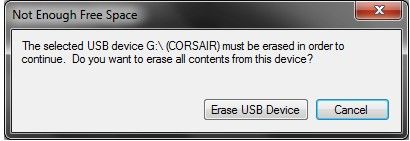

- BOOT USB FLASH WITH TOTAL COMMANDER HOW TO
- BOOT USB FLASH WITH TOTAL COMMANDER WINDOWS 10
- BOOT USB FLASH WITH TOTAL COMMANDER ISO
- BOOT USB FLASH WITH TOTAL COMMANDER FREE
Step 3: Use the DISM command to split the WIM file into multiple pieces. In the new window, create a folder on a local hard disk and copy the contents of the mounted drive from the other window to that folder. Leave that File Explorer window open and press Ctrl+N to open a new window.
BOOT USB FLASH WITH TOTAL COMMANDER ISO
Open File Explorer and double-click the downloaded ISO file to mount it as a virtual drive. Step 2: Mount the ISO file and copy it to a local drive. Use a USB flash drive that's at least 8 GB in size, and make sure to leave this check box unselected Instead of completing a simple drag-and-drop copy operation as expected, File Explorer puts up this File Too Large error message: If you're downloading an advance release, as I was, or if you need the previous release, you'll run into an old, familiar, and extremely annoying problem. But that page only includes the latest official release.
BOOT USB FLASH WITH TOTAL COMMANDER WINDOWS 10
That option works fine when you download the Windows 10 installer files using the official Windows 10 Download page, because those files are packaged specifically for use on USB flash drives. Normally, that's a simple process: First, use the Recovery Media Creator to create a bootable USB flash drive then double-click the Windows 10 v2004 ISO file in File Explorer to mount it as a virtual drive and drag the contents of the mounted drive to the bootable USB flash drive. Like many IT pros with a Visual Studio (formerly MSDN) subscription, I downloaded the ISO file yesterday and set about to copy it to a bootable USB flash drive.

Most GNU distributions have coreutils already installed.Microsoft has made Windows 10 version 2004 available to the developer community, a couple weeks ahead of its release to the general public. In order to create a bootable USB flash drive, you will need coreutils (which provides dd). Select your USB stick and click the Write button. Open the SUSE Studio ImageWriter and either drag the KaOS ISO image into it, or press the Select button and find the KaOS ISO image. If your distribution provides Suse Studio ImageWriter, then that one is a well tested alternative GUI to use.
BOOT USB FLASH WITH TOTAL COMMANDER HOW TO
If you are not on KaOS, you can get IsoWriter here, see the README how to build and use.

The application to use is IsoWriter, available in the KaOS repository and installed by default. Once installed, open the command prompt and type (substitute the correct path):ĭd.exe if=/path/to/the/downloaded/iso of=/path/to/the/USB/device You need to download dd which is a common program with the primary purpose of low-level copying of raw data. iso extension, in that case rename the downloaded KaOS ISO file to. It might be your Windows version does not support the. Unetbootin and Rufus are NOT compatible with KaOS. Before following any steps, make sure the device is plugged in but not mounted. Make sure the system where you will boot the USB flash drive from, has USB ports and can boot USB flash drives. In order to put a KaOS ISO image onto an USB flash drive, you will need a drive capable of storing 1.8 Gb, a system with USB ports and some specialized software.
BOOT USB FLASH WITH TOTAL COMMANDER FREE


 0 kommentar(er)
0 kommentar(er)
